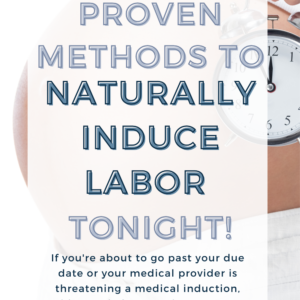Your sweet baby is here and you are on your way to figuring out your new role as a mama. Nursing your baby is a fun new journey! It can also be challenging. Don’t worry if you run into some problems! Newborn breastfeeding problems is something everyone runs into. Here are the 10 biggest and how to fix them!
When I was pregnant with my first baby, I thought breastfeeding would be natural and easy. We got the hang of it eventually, but I was very unprepared for what it meant to be the food source for another person. I’ve never been so ravenous, emotional and sore in the nipples. There were so many times I wanted to give up. I know I had every single one of these newborn breastfeeding problems. I am way more prepared and am having a better nursing start with baby two.

Newborn Breastfeeding Problems to Avoid
1| Passing on breastfeeding classes
Learn through my mistake! You can avoid nearly all newborn breastfeeding problems by taking a class! I thought breastfeeding would be easy and natural and that I’d pick up on it quickly. As I struggled through sleepless nights, bleeding nipples and a hungry, fussy baby, I knew I was wrong. Taking a breastfeeding class is so important to do before baby is born. You will learn everything you need to know about feeding your baby and taking care of yourself.
I was envious when my friends and sister made nursing look so wonderful and easy. I spent so many nights googling breastfeeding issues and watching videos trying to get the hang of things for me and my baby. The difference was they took breastfeeding classes!
If nothing else, do it for your nipples! Your hospital will offer a prenatal breastfeeding class and there are plenty available online. If you don’t take a class or still have trouble almost all hospitals and pediatricians have a lactation consultant that can help you. Don’t wait until you want to give up, you’re baby is always crying out of hunger or your boobs and nipples are so sore you cry. There are so many resources to help you make your breastfeeding journey a wonderful one.
2| Pumping too soon
When your milk comes in, your breasts are going to massive and so sore! There is nothing you’ll want to do more than to pump for some relief. Don’t do it! Your milk works on supply and demand. If you pump, your body will think it’s your baby drinking milk. You might relive the pain of engorgement for the time being, but then guess what will happen the next day? The same pain and encouragement. (See #3 for engorgement tips and relief.)
If you are a working mama or just want to store some extra milk, it’s important to wait until your milk supply is established. Again, pumping too soon will cause your body to go into overdrive. You will become a milk micky machine but this may not be comfortable or sustainable. Instead, wait until your baby is 6 to 8 weeks. At this time your body and your baby will have established an eating pattern and milk supply that will let you introduce pumping.
3| Assuming pain is normal
There are a lot of learning curves when it comes to breast-feeding. If you don’t take a class or you’re still getting used to nursing pain can start to feel like a common reality. Cracked and sore nipples, achy breasts, or even mastitis, are common issues that plague a lot of nursing women. These annoying issues happened to all of us, but it doesn’t mean it’s something normal and something you have to live with. On a regular basis, nursing your baby should be a great experience! If it always hurts to nurse or you’re trying to avoid it, something is wrong. These are some common newborn breastfeeding problems that will cause pain and discomfort.
Breast Engorgement – Nurse your baby. You can also apply warm compresses or stand in hot shower. Cabbage leaves are known to help relieve pain, too. Put them in the fridge for extra comfort. Lastly, you can hand expresses a little bit of milk by massaging your boobs. It will help provide enough relief without your boobs thinking your baby is eating.
Nipple Pain – Nipple pain is typically caused by a shallow latch. Instead of baby sucking on the breast, she biting down on just your nipple. It’s called breast-feeding not nipple feeding! Next time baby nurses, make sure she has a deep latch by placing your nipple on her upper lip or by her nose. Wait until her mouth is open wide and scoop your breast into the mouth, then lower the nipple in. These pictures here and explanation are super helpful.Getting a good latch will provide some immediate relief, but healed nipples will take a few days. These products are great to relieve the pain until then.
Mastitis – Breast pain, redness and warm skin is a sign of mastitis. It typically is accompanied by flu like symptoms, such as a fever, body aches, and nausea. Many cases of mastitis require medical attention and an antibiotic. You can continue nursing your baby but also make sure you’re taking care of yourself. Drink lots of fluids, get lots of rest, and apply warm compresses as need be.
Mastitis is caused by a block in the milk duct. Avoid this by making sure you nurse baby often and switch positions so that baby gets milk from all ducts. You will notice if one of your ducts is becoming clogged because it will feel like a bruise. It will also feel like a lump. As you nurse your baby, massage the lamp so that it releases the milk. You can also hand express the milk for later. Using a Haaka is also a great way to prevent mastitis and relieve a clogged duct. Check out how HERE.
Remember that consistent breast-feeding pain is not normal! If you are having trouble, it’s not your fault! See your healthcare provider or find a lactation consultant at your hospital or pediatrician. Aeroflow has a lactation consultantdirectory. You can add your zip code to find help near you. Feel free to troubleshoot yourself, too. There are lots of videos and resources online.
These are all super awesome products to help ease breast and nipple pain! Click a picture to shop!
4| Trying to get your newborn on a schedule
Breastfeeding during baby’s first 6-8 weeks of life helps establish your milk supply. Baby will nurse often and cluster feed (eating every hour or two) in order to signal to your body to make milk. I felt like my first born was on my boob the first several weeks of life. It was exhausting nursing all the time and trying to do things with only one hand. If you are feeling this way, I totally understand. Stick with it. Baby knows what she’s doing. By letting baby nurse on demand, you are avoiding all future newborn breastfeeding problems with milk supply. Plus, all of this nursing will make sure baby is getting enough milk when she starts to take full longer feedings.
I know you are tired and feeling like you are nursing every second of the day, but this will pass. Putting baby on an eating schedule too soon will interfere with your milk coming in and providing enough for your babe.
5| Ignoring your hunger and thirst
I’ve run half-marathons and never have I ever been as hungry or thirsty as I am when I’m nursing. Don’t ignore your body’s signals for you to eat and drink more. Drinking a ton of water is essential. Milk is liquid and your body needs you to drink enough for you to make milk and provide for yourself. Hormones will help remind you to drink water. Every time you nurse, you will become so thirsty! I always kept this water bottle by my side to literally chug when nursing.
Pay attention to your hunger cues too! You’re doing an amazing thing and providing food for another person. If you deprive yourself, your body will steal from your milk supply. Your milk supply will dip and that is a slippery slope. Enjoy those extra calories! It’s fun to eat your extra calories in brownies, but you need whole, nutrient-dense foods, too.
Keeping your food and water intake up will help you avoid so many newborn breastfeeding problems. This is an awesome cook book that is written specifically for breastfeeding mamas. Become a milk-making machine with these delicious recipes. Also, the chef and nurse who wrote the book obviously realize you just had a baby so the recipes are easy to make! Check out The Breastfeeding Cookbook HERE.
6| Introducing a bottle or paci too early

Nipple confusion is caused by a baby’s fussiness and trouble switching from breast to bottle. Babies use a different technique to remove milk from a bottle than a breast. Some babies have trouble going back and forth and some don’t. Some babies find nursing from a bottle easier than the breast, so they may begin to prefer this if they don’t master breastfeeding.
The verdict is out on the optimal time to introduce the bottle and pack. It varies from baby to baby. But you can avoid nipple confusion as one of your newborn breastfeeding problems by waiting until breastfeeding and your milk are well established. This takes around 6-8 weeks. It’s recommended to wait to introduce the bottle until then. Find a bottle that is good for nursing babies and have dad be the one to give the bottle first. You want baby to know that when you hold her, she is nursing. At least until both nursing and bottle-feeding are well established.
Introduce the paci a week before or after introducing the bottle. Let baby get used to one before starting the other.
7| Listening to other people’s opinions
Every single person you meet will have an opinion about breastfeeding. When to stop, how often to nurse, breastfeeding in public, when to introduce solids, and the list goes on. Someone once told me my baby wasn’t sleeping because he wasn’t getting enough milk and formula keeps baby’s fuller longer. My tired mama mind almost listened to them.
Your breastfeeding journey is YOUR breastfeeding journey. Enjoy every minute of it. As long as you and baby are happy and fed, it doesn’t matter what everyone else says. Don’t listen to other opinions. Mamas knows best.
** RELATED: Essentials for Surviving the Fourth Trimester
8| Letting baby snack
Milk is established and you and baby are nursing well. Of all the newborn breastfeeding problems, this one will interrupt your sleep! If you have been nursing for a few weeks and find that baby is only nursing 5-10 minutes at a time or wants to eat every hour or so, it’s because she’s snacking. Nursing provides comfort for baby in the fourth trimester. Your smell, milk and heartbeat are they only thing that is familiar to her from before she was born. Being snug in your arms and being fed warm milk is a recipe for a cozy nap. The problem is that when baby only snacks, she isn’t going to sleep well. She will also want to be on your boob all the time.
Avoid snacking by keeping baby awake when she’s eating. This can be super hard. You can change her diaper, undress her, tickle her hands and under her chin. I’ve even used a cool wipie to keeps my babes awake to nurse. Ultimately, baby should nurse on both sides for ten minutes minimum to ensure a full feed. This, of course, changes from baby to baby and how your milk letdown is. Baby will show physical signs of being full. A good signal is her hands will become loose and relaxed.
Fuller feeds will help you get baby on a schedule, too. I use the term schedule lightly because just like you and I, baby will be hungry when she’s hungry, which isn’t always an exact time. Around 6-8 weeks, you can introduce baby to an eating pattern that spans feeds to 2-3 hours apart, making sure she is getting full feedings. A schedule will ensure better sleep and a little bit of routine for your day.
** RELATED: Breastfeeding Essentials Every New Mom Needs
9| Not using a Haaka
When baby starts sucking, the letdown reflex squeezes milk toward the nipples. Toward both nipples! So when baby is feeding on the left, your right will start leaking. For some mamas, this is a lot of milk. I used to keep a burp cloth near me to catch my letdown. Or I’d just change my shirt. When I finally got a Haaka breast pump, I realized I was wasting 1-2 ounces!
Even if you don’t use the Haaka for every feeding, you will get a lot of milk to store. Say you only use it during the day, you could get up to 6 ounces a day! Save it for when you go back to work or date night. You can also use extra milk for diaper rashes and milk baths.
Using a Haaka isn’t just good for catching your letdown. It also can help with a clogged duct or mastitis. See how HERE.
** Related: Breastfeeding Essentials for the First Few Weeks
10| Paying for your breast pump

Before you get excited to start pumping and grab all of your baby gear, check that your insurance will pay for your pump. Almost all insurances will pay for it for you!! This is great because they are usually a few hundred dollars. Every insurer handles this differently.
For my first baby, I didn’t have to do anything. Once my insurance saw my prenatal visits and confirmed the birth, they sent my the pump in the mail a few days later. For my second baby, I had different insurance. I had to call them, and they sent me the directions for getting a script, ordering the pump through a specified website and submitting paperwork. This was more work, but I was able to pick my pump this time.
It sounds intimidating, but don’t fret! It easier than you think. The hardest part is finding the time to place the call. Say you spend thirty minutes on the phone and gathering your paperwork, 30 minutes for $300 is pretty worth it!
Most insurances will send the pump after the birth is confirmed. This means you’ll get it within a few weeks after baby is born. Don’t fret! You want to still be nursing on demand and not pumping at this point! You’ll have plenty of time to get acquainted with your pump soon.
If you don’t want to go through the insurance hassle yourself, you can use the Aeroflow website. You simply submit your insurance to discover your coverage. Aeroflow submits the required paperwork, and you pick the pump. Easy!
PIN FOR LATER!!














Leave a Reply